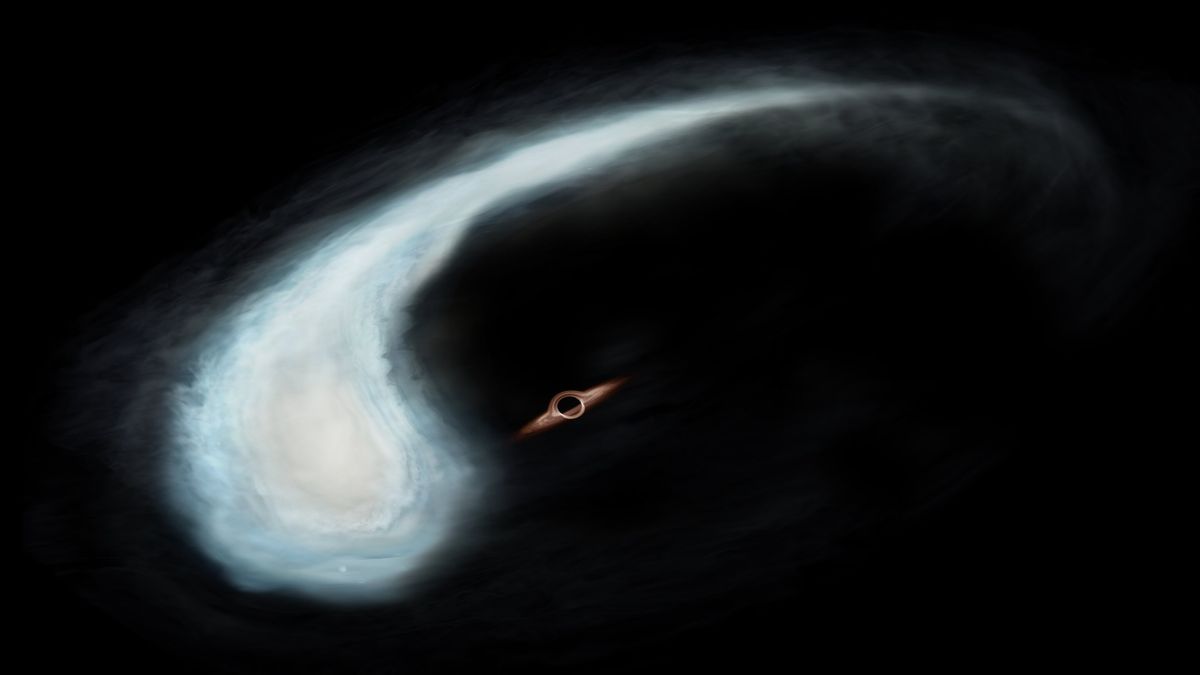Cosmic 'tadpole' points to ultra-rare black hole hiding near the Milky Way's center
By Brandon Specktor
published 1 day ago
Scientists detected a cloud of gas sculpted into a wonky tadpole shape near the Milky Way's center, possibly pointing to a rare intermediate-mass black hole.

An illustration shows a bright, tadpole-shaped cloud of gas being stretched thin by an orange-rimmed black hole
The so-called Tadpole near the galaxy's center could be the victim of a rare, intermediate-mass black hole. (Image credit: Keio University)
An enormous, deformed dust cloud that astronomers nicknamed "the Tadpole" could point to the location of an extremely rare type of black hole never confirmed to exist in our galaxy before.
In a study published Jan. 10 in The Astrophysical Journal(opens in new tab), researchers based in Japan describe the strange dust cloud, which looks like a big-headed, long-tailed tadpole and sits near the center of the Milky Way in the constellation Sagittarius, about 27,000 light-years from Earth.
This region of the Milky Way, known as the Central Molecular Zone, is extremely dense with star-forming dust clouds that clump around our galaxy's central supermassive black hole, known as Sagittarius A*. Even in this extreme environment, the Tadpole's shape and movement stood out to the researchers.
Using observations from the James Clerk Maxwell Telescope in Hawaii, as well as the Nobeyama 45-m Radio Telescope in Nagano, Japan, the team analyzed the Tadpole and its surrounding environment in multiple wavelengths. The researchers determined that the Tadpole was being stretched into its unusual shape by the intense gravitational pull of a nearby object. However, no matter which wavelengths they looked in, the team's search revealed no signs of anything massive enough to cause such a deformation.
More:
https://www.livescience.com/cosmic-tadpole-points-to-ultra-rare-black-hole-hiding-near-the-milky-ways-center
